If you’ve noticed additional foot traffic in the special diets section of your food aisles, your store is right on track with the growing trend of consumers looking for healthy, allergen-free meal choices. And, they’re not settling for just anything.
Consider this:
- More than 30 million Americans have some kind of food allergy or intolerance.
- One in 133 Americans has celiac disease.
- Some experts feel there’s a connection between avoiding certain food allergens/intolerances and improvements in some health conditions (1).
If you’ve noticed additional foot traffic in the special diets section of your food aisles, your store is right on track with the growing trend of consumers looking for healthy, allergen-free meal choices. And, they’re not settling for just anything. According to a study of 2,536 people with gluten and other food allergies/intolerances (conducted by GlutenFree Passport and AllergyFree Passport), good taste was the biggest expectation of allergen-free foods (see chart) (2).
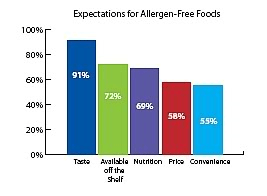 “People with food allergies and intolerances didn’t choose this. Anyone from any walk of life or eating philosophy could suddenly find themselves with special dietary needs,” says Stephanie Robbins director of marketing at Pamela’s Products, Ukiah, CA. “If they cannot find foods that satisfy them emotionally, they have a greater chance of eating foods that are toxic to their bodies, of going back to the foods that made them sick because they cannot enjoy the foods they need for maintaining good health.”
“People with food allergies and intolerances didn’t choose this. Anyone from any walk of life or eating philosophy could suddenly find themselves with special dietary needs,” says Stephanie Robbins director of marketing at Pamela’s Products, Ukiah, CA. “If they cannot find foods that satisfy them emotionally, they have a greater chance of eating foods that are toxic to their bodies, of going back to the foods that made them sick because they cannot enjoy the foods they need for maintaining good health.”
David Caine, president of Aunt Gussie’s of Garfield, NJ, agrees that satisfaction is key for this category and suggests that it is reflective of quality. “People get satisfaction out of eating something that’s good in quality, and they don’t have to eat the whole box to feel satisfied. That’s a big problem. There’s such garbage on the mainstream market. People eat it, don’t feel satisfied and then they want more. You buy a cheap product, end up consuming the whole box and you get no satisfaction,” he says.
Food manufacturers understand this better than they did several years ago and are introducing into the market more nutritious, delicious products that are appealing to those with allergies/intolerances and, significantly, those without. Says Keith Kohler, head of international sales for Core Naturals (maker of Salba), Winter Springs, FL, and a gluten-free consultant, “Five to 10 years ago, there were only about one-third the options that there are presently. A decade ago, many gluten-intolerant consumers were happy to have any type of solution.”
 Taking a look at today’s diverse options, it’s clear that times have changed.
Taking a look at today’s diverse options, it’s clear that times have changed.
Mooove Over Milk
Based on clues from human anatomy, it’s been suggested that we just weren’t intended to drink milk our entire lives. From birth through early childhood (when milk is a primary source of nutrition), the body produces large amounts of lactase, an enzyme that helps break down lactase for absorption. Over time, our diets expand, we become less reliant on milk and our bodies react by producing less lactase. Some believe this leads to symptoms of lactose intolerance, though it should be noted that the condition also may be genetic or caused by injury (3).
For years, lactose-intolerant individuals have turned to the natural products industry for healthy, non-dairy alternatives such as soy-, almond-, vegetable- and hemp-based products. But interestingly, there’s a growing class of consumers who choose dairy alternatives for other reasons. Says Mike Fata, president and co-founder of Manitoba Harvest Hemp Foods & Oils, Winnipeg, Canada, “Consumer demand for dairy milk alternatives has been growing for many years due to vegetarian preferences and concerns about dietary sensitivities to dairy, growth hormones in dairy milks and issues associated with dairy production.”
In fact, many suspect that traditional cow’s milk products may be related to hormone-dependent cancers like testicular, prostate and breast. Ganmaa Davaasambuu, a physician and a scientist at the Harvard School of Public Health, describes a study that compared diet and cancer incidence in 42 countries: “Rates were highest in places like Switzerland and Denmark, where cheese is a national food, and lowest in Algeria and other countries where dairy is not so widely consumed” (4).
Believing that milk products with hormones may negatively affect health, Davaasambuu and other Harvard colleagues have studied hormone levels in children. In one trial, third-graders in Mongolia (where locally sourced milk has low hormone levels) were given U.S. milk for a month. After a month, their hormone levels jumped.
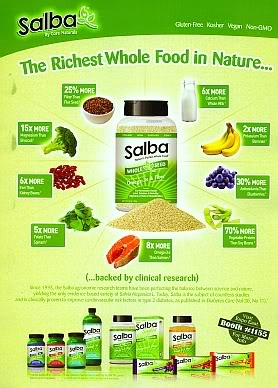 In addition to choosing non-dairy items or natural, non-hormone dairy products for these reasons, individuals without lactose intolerance believe the alternatives offer great opportunities for added nutrition. According to information from Manitoba Harvest Hemp Foods & Oils, maker of Hemp Bliss hemp milks and other hemp products, hemp milk is rich in the omegas and other important nutrients. For example, a serving of original Hemp Bliss yields 1,200 mg of omega-3, 4,000 mg of omega-6, 1,000 mg of omega 9, 250 mg of GLA and 5 g of protein. Says Fata, “Of the dairy alternatives, Hemp Bliss is the richest source of omega-3, -6 and -9 essential fats.”
In addition to choosing non-dairy items or natural, non-hormone dairy products for these reasons, individuals without lactose intolerance believe the alternatives offer great opportunities for added nutrition. According to information from Manitoba Harvest Hemp Foods & Oils, maker of Hemp Bliss hemp milks and other hemp products, hemp milk is rich in the omegas and other important nutrients. For example, a serving of original Hemp Bliss yields 1,200 mg of omega-3, 4,000 mg of omega-6, 1,000 mg of omega 9, 250 mg of GLA and 5 g of protein. Says Fata, “Of the dairy alternatives, Hemp Bliss is the richest source of omega-3, -6 and -9 essential fats.”
Other top-selling rice, soy and almond milks are packed with the omegas and proteins, too.
Taste-testing is important for non-dairy products, as many choose alternatives because they prefer the taste over the original. Says Katharine Schuler, director of marketing communications at U.S. Mills, LLC, Needham, MA, “We use soy not only to improve the nutritional profile, but also to improve the taste.” The company’s newest dairy-free product, Uncle Sam Instant Oatmeal with Soymilk, for example, is made with a soymilk powder that adds a smooth, creamy texture to the oatmeal. “The feedback we have received from our consumers is that they are excited about this new product that is suitable for their diets either because they are lactose-intolerant or simply looking for a great-tasting oatmeal. They love the fact that there is a new, innovative product that is suitable for their special dietary needs. And, they love the fact that it tastes so good,” she says. Other dairy-free products from U.S. Mills include New Morning Graham-Wiches sandwich cream cookies.
 In addition to giving customers the chance to experience the flavors and learn about the nutritional profile, says Fata, retailers can highlight the ecological and animal-friendly benefits. He notes, “Hemp is good for the health of the planet. Hemp farming is one of the best examples of sustainable agriculture.”
In addition to giving customers the chance to experience the flavors and learn about the nutritional profile, says Fata, retailers can highlight the ecological and animal-friendly benefits. He notes, “Hemp is good for the health of the planet. Hemp farming is one of the best examples of sustainable agriculture.”
A Tough Nut to Crack
One of the most serious food allergies is to nuts, which, in severe cases, can be fatal. Therefore, says Nancy Curby, director of marketing at Enjoy Life Foods, Schiller Park, IL, “Food safety and accurate labeling is critical.”
Particularly in this segment, having a dedicated, nut-free production facility is key. According to Curby, such a facility should:
- have good manufacturing practices in place, and follow them consistently,
- educate those working in the facility regularly about the seriousness of food allergies and cross-contamination,
- screen and qualify all ingredient suppliers, and
- test all incoming ingredient batches for any trace of nuts.
And, Curby adds that ingredients used in such food products should be “tested to ensure strict allergen control standards are met.” This is standard practice at Enjoy Life, which offers 24 different gluten-free, allergy-friendly products (cookies, granolas, snack bars, trail mixes, bagels, chocolate chips and new chocolatey bars) under the Enjoy Life brand name. Five nut- and gluten-free cereals are available under the Perky’s brand name.
Nuts are some of the more difficult ingredients to replace in food recipes. Some companies, like Bobobaby, Burnaby, Canada, turn to seeds as an alternative. Says the company’s president Kalpna Solanki of its nut-free trail mixes for kids, “We wanted to have a good protein source, but we didn’t want to have any nuts or soy. So, we decided to use pumpkin and sunflower seeds instead.” Other nut-free substitutions in Bobobaby allergen-free meals and Bobokids meals and snacks include lentils, chick peas and quinoa.
Another allergen-free foods specialist, Ener-G Foods, Seattle, WA, recently introduced a sunflower cookie, that is a substitute for peanut butter cookies. “We haven’t had peanuts in our facility for over eight years,” says sales manager, Jerry Colburn. “We stay free of all of the major allergens. All our ingredients are dairy-, wheat-, nut- and gluten-free, and often soy-free, too.”
Nut-free foods are especially important for parents of school-age children. “There are so many warnings out there from schools for parents in terms of allergens like peanuts and tree nuts and they are requesting that parents not send things to school containing peanuts and nuts,” Solanki points out.
It is critical that retailers stock a variety of allergen-free foods not only for children with allergies, but also for babies that may not have shown allergies yet. The reason is that the choice of allergen-free foods may shape their health later in life. Says Solanki, “We decided to stay away from these allergens [in our baby foods] because our research indicated that if you eliminate some of these allergies from kids early on, chances are that it may help them be free of some of these allergies later on…the first year is really, really critical in trying to stay away from these allergens.”
Not a Gluten for Punishment
Though celiac disease was only obscurely known among the public a few years ago, it is practically synonymous with food allergies and intolerances today. Gluten is a protein found in wheat and barley to which many people are intolerant. Diagnoses of this disease have soared in recent years, which may be attributed to better understanding and recognition of the symptoms. “The number of people diagnosed with food allergies continues to climb each year, as the medical profession improves its testing methods and misdiagnoses become less common,” says Aunt Gussie’s Marilyn Caine. “Consumers are better educated than ever before in the wide variety of alternative ingredients and allergen-free offerings.”
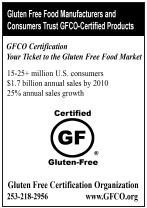 Solanki agrees that people are “a lot better versed in terms of the components that might affect their gastrointestinal systems, that maybe they didn’t know of a few years ago.” This is especially noticeable in terms of gluten. “Gluten is such a huge part of our diets. And when there’s no family history of it, it’s difficult to say, well it could be gluten. So often, there’s no family history,” she says.
Solanki agrees that people are “a lot better versed in terms of the components that might affect their gastrointestinal systems, that maybe they didn’t know of a few years ago.” This is especially noticeable in terms of gluten. “Gluten is such a huge part of our diets. And when there’s no family history of it, it’s difficult to say, well it could be gluten. So often, there’s no family history,” she says.
The result is an explosion of food manufacturers that are launching gluten-free products. According to Kohler of Core Naturals, “Those suffering from celiac disease must follow a strict gluten-free diet, and those consumers [I’m one of them myself] have ever-increasing choices. There has been a significant growth in specific gluten-free products developed.”
Keep in mind, though, it’s not just about celiac disease. Some may simply have allergies to some forms of wheat, and spelt-based products may be good options for these folks, according to D. Caine.
Choosing Gluten-Free Products. Not all manufacturers are created equal. It’s of the utmost importance that gluten-free products are made in dedicated facilities, which many companies have or are moving to. Says D. Caine, “[Aunt Gussie’s] has a dedicated gluten-free facility. We didn’t think it was a good business practice to make gluten-free products in our existing facility. Many companies are coming out with gluten-free products and they may or may not have good manufacturing procedures, especially for cross contamination.”
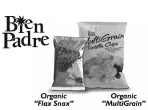 The reason why is that gluten can easily spread throughout production plants. D. Caine offers an example: “I have a young woman on my staff who’s a celiac disease patient and she was working in my R&D room, which is located in our existing facility. Just through the air, she ended up testing positive for gluten even though she’s very careful about what she eats.” Now, he says, she works in the company’s gluten-free facility. He also suggested that there should be stricter controls in place to ensure gluten-free products are always made in dedicated facilities.
The reason why is that gluten can easily spread throughout production plants. D. Caine offers an example: “I have a young woman on my staff who’s a celiac disease patient and she was working in my R&D room, which is located in our existing facility. Just through the air, she ended up testing positive for gluten even though she’s very careful about what she eats.” Now, he says, she works in the company’s gluten-free facility. He also suggested that there should be stricter controls in place to ensure gluten-free products are always made in dedicated facilities.
Kohler makes the point that many industry groups are stepping in to help distinguish high-quality gluten-free products from the pack. “More and more companies are having their products certified gluten-free (by programs like the Gluten Free Certification Organization (GFCO) offered by the Gluten Intolerance Group of North America),” he notes. The GFCO is an independent service that “provides a uniform system, using strict standards to certify a product gluten-free (GF) and enables people to easily identify GF foods with confidence,” according to the GFCO Web site. Certification is annual and is “based on ingredient review, on-site inspection and product testing. Some facilities require multiple unannounced inspections throughout the year.” Certified products bear a seal from the GFCO, which signifies that it contains less than 10 ppm of gluten. This standard is “twice as strict as the proposed FDA definition for gluten-free,” according to the group. A list of certified products, manufacturing sites and ingredients suppliers are available on its Web site, www.gfco.org.
The Autism Connection. Though the quantitative evidence is inconclusive, anecdotal evidence suggests that there may be a positive connection between improvements in autism and consuming a gluten-/casein-free diet.
“For some autistic children, there’s evidence that their bodies do not process gluten and casein correctly,” says Curby. “Gluten and casein [i.e., a protein found in milk] are thought to cause an opioid reaction [such as gut sensitivity and fluid secretion] in children, similar to other opioids. When gluten and casein are eliminated from the diet, many parents of autistic children report an improvement in alertness, sensory perception, awareness of pain and overall behavior management.”
 Adds M. Caine, casein can also be troublesome to celiac sufferers, “especially those diagnosed later in life, when damage to the small intestine is present.” She notes, “additions to Aunt Gussie’s line of gluten-free cookies in the near future will also be casein-free. Retailers should also note that such products are also appealing to a growing vegan population (as long as they do not contain eggs), who choose to be dairy-free.”
Adds M. Caine, casein can also be troublesome to celiac sufferers, “especially those diagnosed later in life, when damage to the small intestine is present.” She notes, “additions to Aunt Gussie’s line of gluten-free cookies in the near future will also be casein-free. Retailers should also note that such products are also appealing to a growing vegan population (as long as they do not contain eggs), who choose to be dairy-free.”
Because there isn’t consensus about the relationship between diet and autism, retailers must take care with handling this tricky topic. Says Robbins, “First, it’s important that both manufacturers and retailers do not diagnose these needs and that we hold back on making suggestions unless people come to us with their dietary plan. People with special needs should be working with medical and dietary professionals to create a program that is right for their body and for us to assume that one diet fits all can put everyone in jeopardy.”
Retailers do play a role in helping clientele looking to understand this issue to locate products suitable for the gluen-casein-free diet. First and foremost, retailers must understand gluten and casein, especially where to find them in foods. This starts with knowing the ins and outs of your stock. “It is very overwhelming to figure out what foods are suitable and which are not, especially for one who has just switched to the diet. Knowing the gluten-free foods will allow the retailer to talk about the food; how it tastes, the quality of the product and the reputation of the manufacturer,” says Schuler. “A retailer whose staff is knowledgeable about gluten-/casein-free foods can step forward and really assist the consumer and make the process a positive one for them. This will help to reinforce the retailer as the store of choice for that consumer.”
Adds Robbins, “Being able to read an ingredient panel is necessary for proper shopping.” She offers these tips for making sure products are free of gluten and casein:
- Steer clear products with wheat, rye and barley.
- Watch out for rice syrup. It’s often made with a barley enzyme and isn’t gluten free.
- Use trusted brands that are active in the gluten-free market such as companies that are members of the American Celiac Disease Alliance.
- Some products are made with milk protein (casein) and some contain other parts of the milk. It may be tough to tell what’s what from the labels. Suggesting products with “non-dairy” labels is a safe route to follow, but clarify with the manufacturer what’s suitable for those on a casein-free diet.
“If a retailer does not understand these ingredients and how to find them in the ingredient listing on products, they are setting themselves up for problems,” says Robbins. “Being educated is the best approach, and allowing your customers to guide you in their needs supports these efforts.”
Being aware of these topics may rebound back to the store with recommendations from happy customers. Says Curby, “Retailers who cater to the needs of this unique group of shoppers will benefit from increased shopper loyalty and positive word of mouth among the autism community.”
FDA Rethinks Allergen-Free Foods LabelingIngesting food allergens by accident can, in some serious cases, be a life or death situation. Therefore, the U.S. Food and Drug Administration (FDA) announced in August a new initiative to curb accidental cross contamination of allergens in foods. Of note, FDA issued a docket entitled “Food Labeling; Current Trends in the Use of Allergen Advisory Labeling: Its Use, Effectiveness, and Consumer Perception.” With this document, the agency announced it is creating a long-term strategy to help U.S. food manufacturers in using “allergen advisory labeling that is truthful and not misleading, conveys a clear and uniform message, and adequately informs food-allergic consumers and their caregivers.” The problem with current labeling, says the agency, is that allergenic ingredients may be inadvertently added to foods not intended to contain allergens. FDA says, “unintentional cross-contact of foods with major food allergens may occur at almost any step of the manufacturing process and for various reasons.” For example, accidental cross contamination may occur when trace amounts are present on a machine surface or when allergen particles are so fine they travel by air in non-dedicated plants. Therefore, they may turn up in foods even though they are not declared on food labels. To help in its efforts to develop a long-term strategy to address this issue, the agency is seeking comments from manufacturers about how they use advisory labeling, how consumers interpret them and what is the most effective wording on allergen-free food labels. The FDA has conducted two consumer research studies to analyze how consumers interpret allergen food labeling and use the information to make purchasing decisions. It hopes the results, combined with industry comments, will result in better labeling of allergen-free foods. |
The Next Step. The next wave of gluten-free product offerings, predict industry insiders, will be expanded taste and offerings. “In most cases, the category needs improvement in taste,” says Colburn of Ener-G Foods, which makes more than 150 allergen-free products such as pretzels, breads and egg replacers. “In some cases, the packaging tastes better than the products!” Tasty breads, for example, are notoriously difficult to formulate without gluten. “Gluten remains elastic when it’s baked. It traps carbon dioxide in the product, allowing it to rise and still have an elasticity,” he explains. “When you take that away, you no longer have the ability to rise and maintain an elastic and chewy product. So, you have to substitute other things like xanthan gum, methylcellulose and different fruit purees.”
One can predict that all food products for restricted diets will soon up the ante in terms of taste (such as improved baked goods) with more creative formulations and new offerings. After all, says Robbins, “Variety is a desire for all categories and the gluten-free category is no different. There are so many different flavor profiles that it’s always a challenge to keep up with demand.” A great opportunity to achieve this is right at home, so retailers should keep their eyes peeled for new products that give the consumers a chance to customize their foods like home mixes. “This frees people up to create the foods they enjoy. It really allows for true variety,” says Robbins. Pamela’s Products, for example, offers baking mixes such as Baking & Pancake Mix and Chocolate Brownie Mix. The company also has a traditional prepackaged cookie, an organic cookie line, new Simplebites Mini Cookies and biscotti, all of which are gluten free.
And, expect the next generation of foods for those with allergies and intolerances to “focus on optimized nutritional profiles,” says Kohler, possibly with those that offer great taste without the sugar. For example, he explains that many gluten-free foods have “blood-sugar spiking nutrients and can often be heavily sugar-laden. It is not unusual for the recently-diagnosed to gain 10–15 pounds once finding gluten-free substitutes.”
D. Caine adds that there are a large proportion of diabetics who also find out they have celiac disease. “They consume so much starch that they turn to sugar so quickly they become diabetic,” he explains. In answer, Aunt Gussies offers four different gluten-free cookies, two of which are also sugar-free.
Another way to address the possible diabetes/celiac connection, Kohler says, could be using healthy grains like Salba, which may help address cardiovascular disease in type 2 diabetics (see March issue of WholeFoods, page 16). Says Kohler, “Salba transforms all foods into a total nutrition solution, so it is the forward-thinking solution that moves gluten-free foods above and beyond the ‘good taste’ requirement. Because Salba does not have any specific taste or flavor, it blends in perfectly and takes on the flavor of whatever it is added to.”
Another area to watch may be fortified gluten-free products because “many people who follow a strict gluten-free diet have a challenge getting the vital nutrients and fiber that they need,” says Curby. Companies like Enjoy Life are already fortifying granolas and snack bars with extra vitamins and minerals.
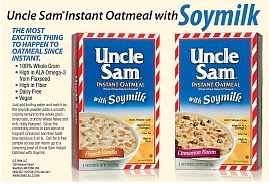 Also combining nutrition and taste is U.S. Mills with its Erewhon Crispy Brown Rice with Mixed Berries, one of the few gluten-free cereals that has real mixed berries. “We provide direction to our product development people to take our most popular selling products and reformulate them into a gluten-free product without sacrificing taste. If it cannot be done, we do not introduce the product,” says Schuler. The company offers other gluten-free cereals like New Morning Cocoa Crispy Rice, Rice Twice, Corn Flakes and Aztec Crunchy Corn & Amaranth Cereal.
Also combining nutrition and taste is U.S. Mills with its Erewhon Crispy Brown Rice with Mixed Berries, one of the few gluten-free cereals that has real mixed berries. “We provide direction to our product development people to take our most popular selling products and reformulate them into a gluten-free product without sacrificing taste. If it cannot be done, we do not introduce the product,” says Schuler. The company offers other gluten-free cereals like New Morning Cocoa Crispy Rice, Rice Twice, Corn Flakes and Aztec Crunchy Corn & Amaranth Cereal.
You can’t talk about improved taste and nutrition without mentioning kids’ products. “You could have a really healthy product, but if it tastes like cardboard, there’s no way you’re going to get a child to eat it. With an adult, you might be able to convince yourself to eat it. With a child, you can’t do that,” says Solanki. “I think product development people are a lot better about that than they used to be, especially when it comes to kids—just recognizing that it has to be healthy, but it has to taste good, too.” WF
References
- Food Allergy & Intolerance Survival Guide, Enjoy Life, Schiller Park, IL.
- GlutenFree Passport and AllergyFree Passport, Understanding Gluten and Allergen-Free Experiences Worldwide Research (Chicago, IL, 2008).
- Mayo Clinic, “Lactose Intolerance,”www.mayoclinic.com/health/lactose-intolerance/
DS00530/DSECTION=causes, accessed August 29, 2008. - C. Ireland, “Hormones in Milk Can Be Dangerous,”www.news.harvard.edu/gazette/2006/12.07/11-dairy.html, accessed August 29, 2008.
Cut Your Carb FootprintThough it’s not from an allergy or intolerance, low-carb products play an important role in the foods for the special diets market. Originally made popular by the Atkins diet, this category is far from dying as consumers use these products as part of a weight-loss plan or a health plan (such as for diabetics). In answer to their special needs, low-carb food manufacturers are constantly looking to improve their products in terms of taste and quality. “The real issue is not whether or not one is consuming carbs; what is important is to consume good carbs,” says Katharine Schuler, director of marketing communications at U.S. Mills, LLC, Needham, MA. An example of “good carbs,” she says, is Uncle Sam cereal, which is a whole grain cereal with high fiber. “The combination of real whole grain and fiber is a great recommendation for customers who are interested in a balanced, low-carb diet. If the customer is willing to change some of their daily food choices by selecting products that provide the combination of whole grain and high fiber, in addition to becoming more active, most likely they will experience gradual, but permanent, weight loss. It is a lifestyle change rather than a crash diet.” Along with providing good carbs, premium ingredients are always on the minds of these manufacturers. Marilyn Caine of Aunt Gussie’s makes the point that its lower-carb, sugar-free spelt cookies are best sellers for the company because “our carb-conscious and diabetic customers appreciate our premium ingredients, like spelt flour, a higher-protein cousin of wheat, and our use of maltitol, a sugar alcohol, which provides a natural, clean, sweet taste not found in chemical sweeteners like aspartame and sucralose.” This is also a top priority for Bien Padre, Eureka, CA, one of the first low-carb tortilla chips manufacturers. Committed to using only organic ingredients, the company emphasizes on its Web site, “when it comes to choosing the correct ingredients, ‘Simplicity is the Best Flavor.’” |
Published in WholeFoods Magazine, October 2008










